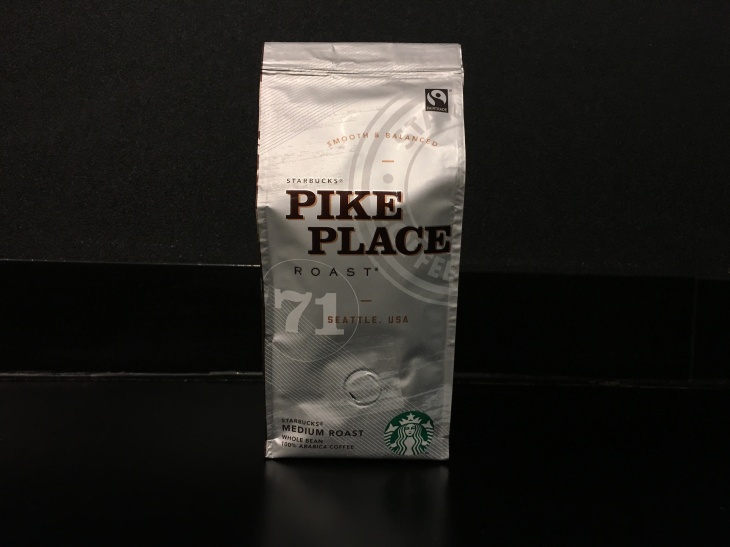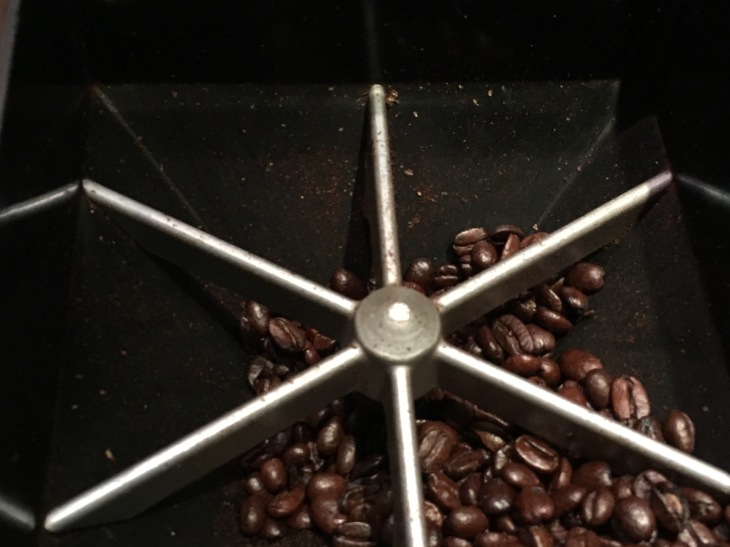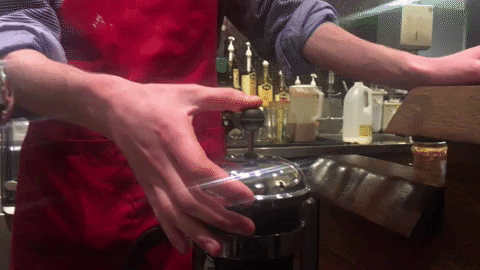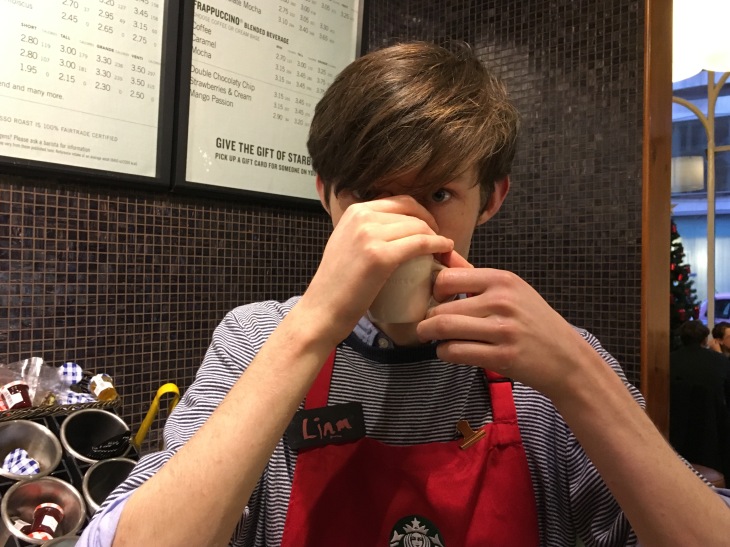Starbucks has always been a home for coffee aficionados. From Caramel Macchiatos to Java Chip Frappuccinos to single-origin pour-overs: Starbucks has it all.
But its coffee is about much more than just different beverages. Every Starbucks coffee is carefully crafted to extract the best flavour possible. Each roast is tested in the Starbucks Reserve Roastery and Tasting Room before being launched. Once in the market, Starbucks baristas, or ‘partners’, can host their own coffee cuppings. A coffee cupping or tasting is performed to observe the different characteristics of brewed coffee. Here is a look at one such cupping of one of Starbucks’s most famous roasts.
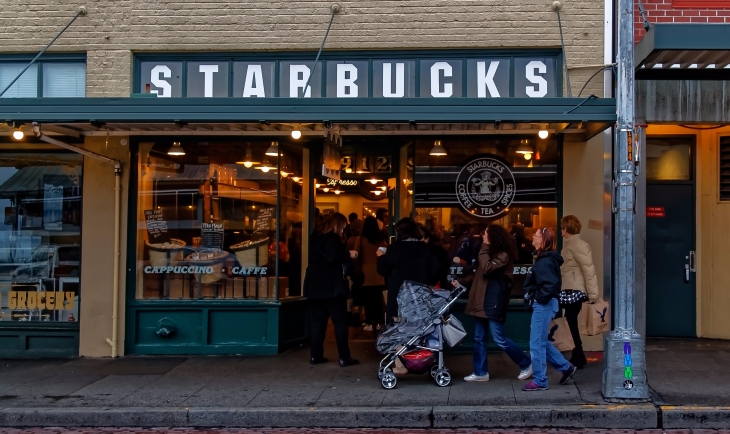
The Original Starbucks Store in Seattle, opened in 1971. Photo: Calvin Hodgson/CC
1912 Pike Place, Seattle is the address for the first Starbucks store ever. It still has the same appearance and ambience as it did all those years ago, in 1971. In honour of its legacy, the coffee we tasted is the Starbucks Pike Place Roast.
Every partner receives the Starbucks Coffee Passport, a database for various coffees and the ultimate guide to coffee tasting.
Coffees are categorised into three profiles, based on the way beans are roasted. A medium roast, as this coffee is classified, is “balanced with smooth and rich flavours”, the Coffee Passport explains. There are three primary coffee-growing regions in the world, “each with a distinct landscape, climate and flavour profile”. The Pike Place Roast originates from Latin America. The coffees from here boast “crisp acidity with flavours of nuts, cocoa and soft spice”.
Coffee processing is done to remove beans from their surrounding cherries. This roast belongs to the Washed Processing method, which “increases the coffee’s acidity and gives it a clean finish”. Introduced in 2008, it is described as “well-rounded with subtle notes of cocoa and toasted nuts balancing the smooth mouthfeel”.
Pike Place Roast: Our signature medium-roast with a smooth, balanced & rich flavour. Drop by at a Starbucks near you & try! #pikeplace pic.twitter.com/uYaTDoFmkM
— Starbucks India (@StarbucksIndia) May 21, 2017
The first step of cupping is to grind the beans. A French Press requires coarsely ground coffee for proper brewing.
After grinding, the coffee is transferred into the Press, and hot water is slowly poured over it. The aim is to wet all the grounds so that the water mixes evenly with the coffee. The appropriate brewing time for a cafetière is four minutes.
Once the timer rings, the coffee is slowly plunged inside the container, isolating the grounds from the brewed coffee.
There are four steps of coffee tasting. Smell, slurp, locate and describe.
You smell by cupping your hand over the coffee and inhaling, as “your nose can detect thousands of smells”. The slurp is crucial, as allows the flavours to reach the mouth’s various tasting zones. Four core characteristics of the coffee are located.
First, the Aroma, or the way it smells. Liam McCombe, Coffee Master, described the Pike Place’s smell as ‘chocolatey and smokey’. Next is the Acidity, which is the tanginess of the coffee. This roast’s acidity was found to be on a medium level.
The third feature is the Body, described as “the weight of a coffee on your tongue”. Another Coffee Master, Mariestellar An, called the medium-bodied coffee “easy to drink”. Finally, the Flavour: the taste of the coffee, described by the baristas as possessing caramelly sweetness and notes of chocolate, with cedar wood-like richness.

Slurping, a crucial stage of coffee cupping.
The fourth step is describing one’s experience from each of the previous stages. It also includes pairing the coffee with a food item, which can either be “similar to the coffee”, or “wildly different” to bring out the flavours, according to Mr McCombe. In this case, the coffee was matched with a zesty Lemon and Poppyseed Muffin.
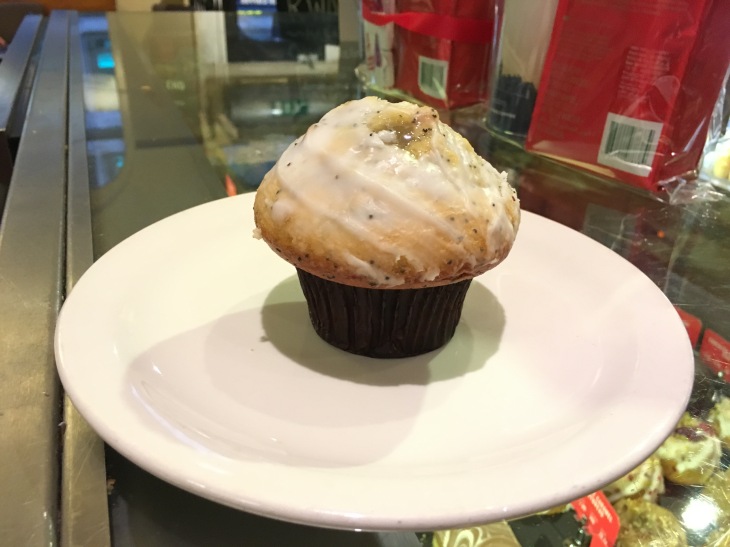
The Lemon and Poppyseed Muffin by Starbucks.
For an in-depth look into coffee tasting and the processes involved, see my story on Steller, The Art of Coffee Tasting.
Mr McCombe broke down the finer details of coffee tasting, explaining why coffee is smelt and slurped, and what locating it means. He urged people to “taste [coffee] from everywhere” to get the best out of the world of coffee.
